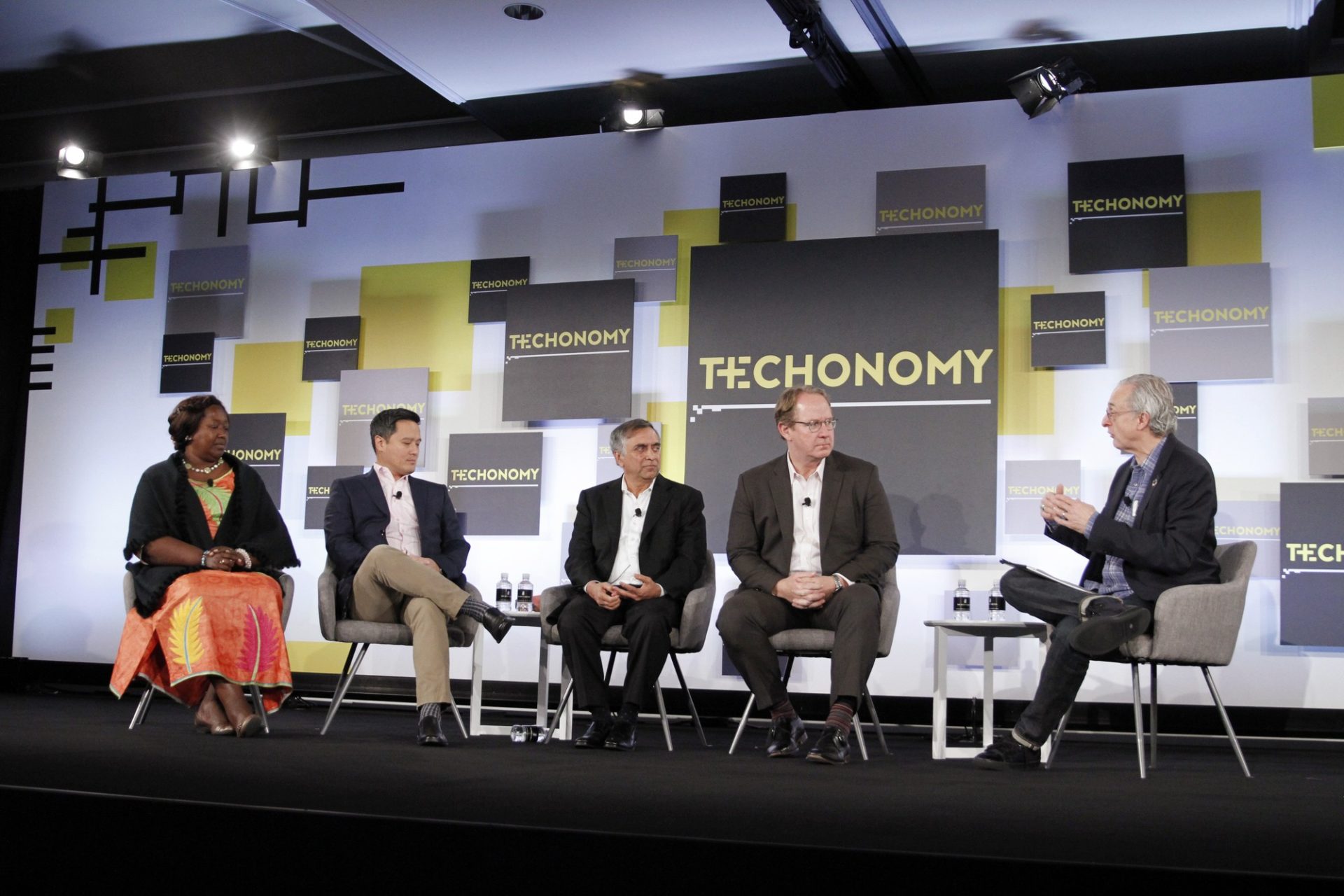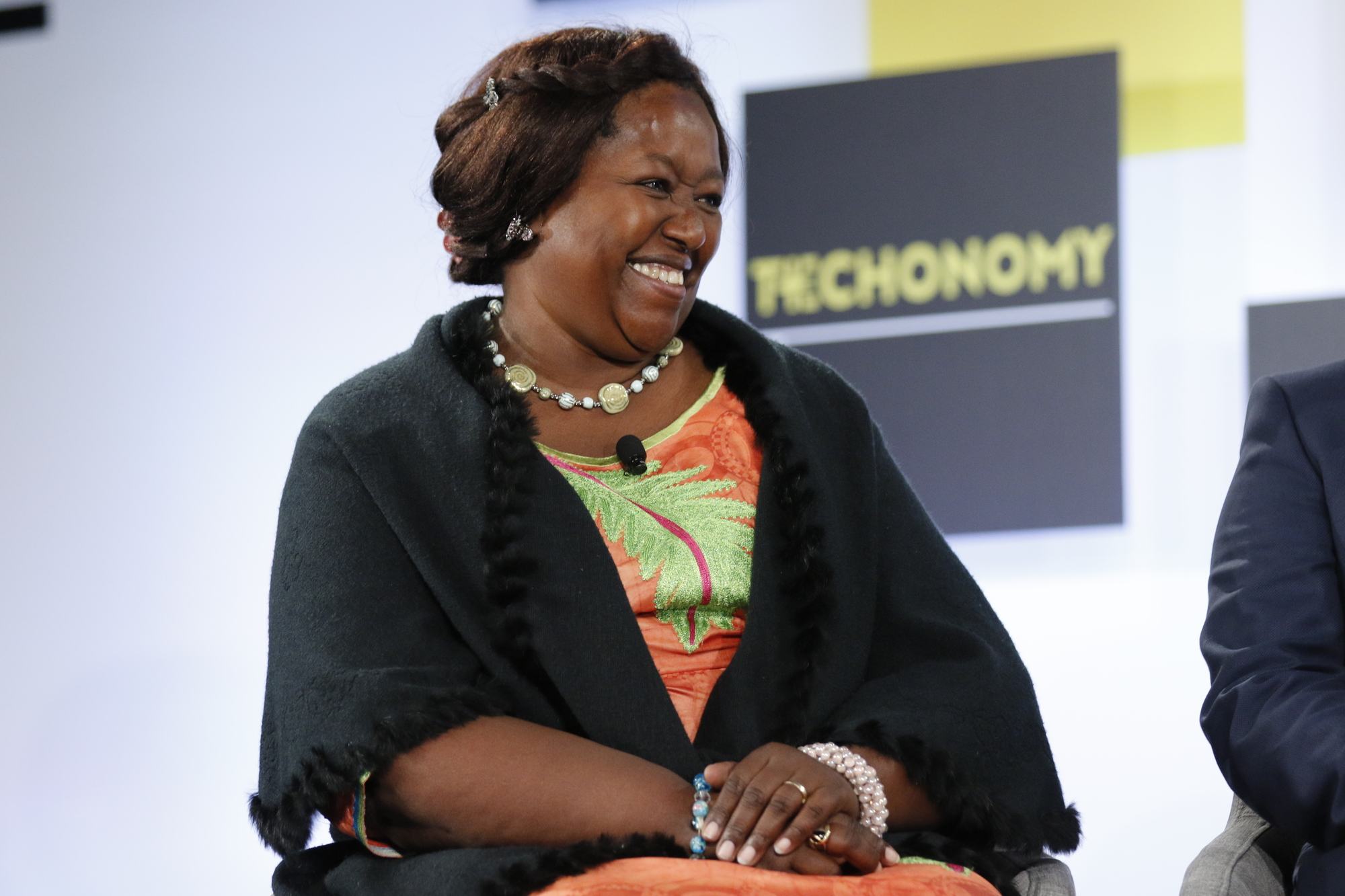Technology will be important for improving global health, but tech itself is not the answer, according to a panel at Monday’s session of Techonomy 2017.
The wide-ranging discussion, moderated by Techonomy CEO David Kirkpatrick, covered potential benefits from 3D printing, accessibility challenges for delivering healthcare in rural settings, providing better information to patients, and using tech to let clinicians focus on people.
Agnes Binagwaho, from the University of Global Health Equity in Rwanda, set the tone with her declaration that technology development for healthcare should focus on creating human-centric, innovative systems that will benefit everyone, no matter where they live.
“Leave nobody out,” she cautioned.
She also noted that too often, ideas about technology center on complex tools, creating a barrier for many people. One example of simple technology with an outsized impact: Binagwaho cited the basic, $5 mobile phone used by some 45,000 community clinic workers in Rwanda to stay up-to-date on outbreaks and other health alerts.
Having technology options doesn’t matter much if you’re not implementing them, said Dr. Roy Smythe, Chief Medical Officer, Healthcare Informatics, at Philips. He said that the medically-developed world doesn’t even make full use of the tools that could be deployed today. That’s largely because of misaligned incentives, such as a focus on acute care rather than long-term health issues.
“There’s a surfeit of technology” that could be tapped to help both the developing and developed worlds, he said. One possibility for applying that technology is to reduce wasteful spending and inefficiency in the developed world’s healthcare so the financial savings could be transferred to the developing world.

Photo credit: Paul Sakuma
Smythe noted that the average primary care visit in the U.S. lasts just 13 minutes, with five of those minutes going to writing charts. “We’re working to improve this,” he said. Advances like the AI systems powering Amazon Echo or similar devices give him hope that a solution “is not far away,” he added.
Oliver Hsiang, Global Head of Health Technology Partnerships at Johnson & Johnson, noted advances both low-tech and high-tech: a campaign to deliver important information about maternal and infant health to pregnant women in the developing world, and a highly connected operating room using robotic-assisted tools and detailed metrics to boost compliance with procedural checklists and to enhance the ability to measure outcomes. “This is really powerful stuff,” he said.
Perhaps the most futuristic tech ideas came from 3D Systems’ Vyomesh Joshi, who spoke about using 3D printing to deliver “mass customization at an affordable price” for everything from hearing aids and dentures to organ transplants. He predicted that by 2019, 10 percent of people in the developing world would be using 3D-printed items; to skeptics, he noted that 95 percent of custom hearing aid casing is already produced this way. With 3D printing, people even in remote locations can get custom-made healthcare devices made out of biocompatible materials; manufacturing can happen on a single printer rather than requiring a factory. Joshi also envisioned a new era of medical education based on innovative tech. “Virtual reality is going to change how you train the surgeons,” he said. “We are still using the old ways and we need to transform that.”
Related: Dr. Agnes and Dr. Smythe each sat down at Techonomy 2017 for interviews with Devex. Read it here.
For Better Global Health, Let Tech Put People Together
Those putting their faith in technology to fix the inequalities and inefficiencies in global healthcare are missing big pieces of the puzzle. A wide-ranging discussion at Techonomy 2017 underscored some of the missed opportunities right in front of us.
















